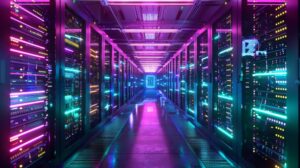Why Is Real-Time Monitoring Crucial for Cybersecurity in Today’s Highly Connected Environment? Cybersecurity hazards are becoming more frequent, more complex, and more damaging than ever. From ransomware attacks to insider threats, companies deal with an ongoing flow of risks, which might compromise sensitive data, disrupt operations, and erode trust. Modern cybersecurity relies on real-time monitoring in this high-stakes surrounding. Rare scans or reactive remedies won’t cut it; threats must be found and managed as they go.
Real-time monitoring offers security staff instant awareness of deviations using continuous visibility into user activity, networks, and systems. Real-time monitoring helps to change cybersecurity from a defensive shield to a strategic advantage by allowing quicker incident response, insider threat detection, compliance support, and a proactive security attitude.
This blog discusses how real-time tracking will enable you to protect your company in a digitally transforming world.
Top 4 Reasons Real-Time Monitoring is Crucial for Cybersecurity
Cybersecurity has changed from a back-end issue to a major, strategic priority as companies get more digital. From multinational corporations to small businesses, the challenges confronting companies today are more common, more advanced, and more severe than ever before. Modern cybersecurity needs real-time monitoring that can supply quick awareness, fast detection, and rapid response capabilities. Organizations can constantly track systems, networks, user activity, and endpoints to spot anomalous behavior the minute it arises using real-time monitoring. It empowers security teams with visibility and control and aids in reducing damage before it gets serious.
Therefore, in this piece of writing, we’ll highlight the top reasons real-time monitoring is crucial for cybersecurity. So, stay with us here and keep reading to know the worth of real-time monitoring in cybersecurity.
Threats Are Constant and Evolving
From ransomware and phishing scams to zero-day vulnerabilities and advanced persistent threats (APTs), the nature of cyber assaults has evolved enormously in both volume and complexity. Weak methods allow attackers to infiltrate systems and remain undetected for weeks or even months, exfiltrating data, obtaining credentials, or launching organized attacks from within.
Without real-time monitoring, these violations could go unnoticed until the damage is irreversible. Acting as a digital surveillance system, real-time monitoring alerts security teams the moment unusual activity, such as an unauthorized login from an unfamiliar location. This level of visibility enables businesses to stay ahead of threats rather than constantly responding to their impacts.
Enables Faster Incident Response
In cybersecurity, a key consideration is faster incident response time. A threat is detected earliest; the influence can be more limited. Accelerating incident response relies greatly on real-time monitoring, which lets businesses react quickly and forcefully at the first indication of compromise. For instance, real-time monitoring systems can quickly identify a malicious insider transferring sensitive files to an outside drive and set off an alarm. Automated workflows can also start, like, revoking access, isolating impacted systems, or notifying response teams.
Rather than taking days or weeks to observe and react to a breach, actions can be done within minutes to significantly lower possible harm. Quick response not only contained the breach but also helped to lower recovery expenses. Many industry studies show that companies with quick monitoring ,managed security services and strong incident response capabilities usually have far lower costs per breach than those with slower, manual detection techniques.
Detect Insider Threats and Anomalous Behavior
Though much attention in cybersecurity focuses on external attacks, insider threats, whether malicious or unintentional, still pose a significant concern. The data integrity and security posture of a company may be seriously jeopardized by partners, contractors, and employees with legitimate access. Real-time monitoring is particularly effective at identifying unusual activities indicative of an insider threat.
For instance, an employee’s sudden file access outside their normal work scope or a large data download after office hours could suggest either malicious intent or coercion driven by outside attackers. Real-time monitoring systems analyze behavioral trends over time and can promptly identify deviations, providing an opportunity to investigate before damage occurs.
Builds Proactive, Not Reactive, Security Postures
Too many companies still run a reactive cybersecurity strategy—reacting to events and violations after the fact, usually when it is too late. Real-time monitoring changes that paradigm by providing a proactive security posture in which threats are projected, identified, and neutralized before they develop. This proactive approach helps to keep company continuity, lower idle time, and strengthen the organization’s future attack resilience.
Teams can modify rules, sharpen access controls, and refresh detection rules to fit emerging threats by examining trends in alerts, behaviors, and incidents over time. Real-time monitoring enables more intelligent, more deliberate cybersecurity operations; hence, it is not only a defensive weapon.
For this, you can choose cybersecurity companies in Dubai to hire professional detectors to ensure real-time monitoring that eventually secures your network.
Ready to Invest in Real-Time Protection
In a Real-Time World, Conclusion: Cybersecurity threats move quickly; therefore, companies that don’t keep up run the risk of having disastrous ramifications on their performance. Real-time monitoring is now required, not a luxury. Real-time monitoring improves an organization’s defense by providing constant visibility, recognizing insider threats, and fostering a proactive security culture. In a digital-first world, it transforms cybersecurity from a reactive chore into a strategic advantage that lets companies run with more confidence, trust, and resilience. So, don’t wait and find the best cybersecurity company in your town.
Also Read : Cybersecurity Simplified: Expert Advisory for ISO 27001, SOC 2, DPDP, and CSCRF






